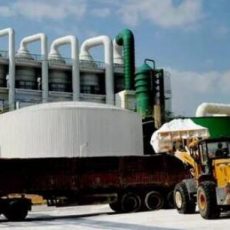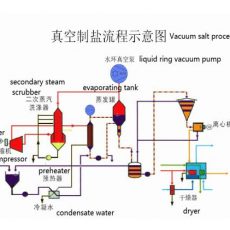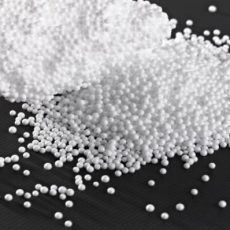liquid ring vacuum compressor in Flare gas recovery of application
Heavy oil catalytic cracking (FCC) is the main way to increase the production of light oil in China, and is an important means of refining and deep processing. The annual processing capacity of FCC units in China is more than 40 million tons. The annual discharge of flare gas (also known as low-pressure gas) is more than 2 million tons, and the total amount of flare gas discharged by other petrochemical plants is more than 3 million tons / year. The main components of flare gas are hydrogen and C1-C4 hydrocarbon components. The components vary greatly in different units or different discharge points of the same unit, and the explosion limit is 2.37-74.2v%. Most of these hydrocarbon containing combustible gases are incinerated by flare unit. It not only causes huge energy waste, but also causes great environmental pollution. All domestic petrochemical enterprises should study the recovery technology of flare gas in order to reduce the processing cost and finally eliminate the flare.
In the past decade, in order to reduce the cost and environmental pollution, the world petrochemical industry has reformed the torch system of oil refining and petrochemical plants, recycled resources and energy, and achieved some results, but has not yet achieved the goal of completely eliminating the torch. There are many reports on the recovery and utilization of flare gas in China. There are two basic ways to recycle the flare gas as energy: one is to store it in a gas holder, then pressurize it to 0.6-1.0mpa and send it to the fuel gas pipe network. The second is to extract the flare gas directly from the flare gas pipe network by compressor and send it to the fuel gas pipe network after pressurization.
The main problems of existing recycling technologies are as follows:
(1) No matter the direct suction and compression process or the gas holder storage process, the complete recovery of low-pressure gas can not be achieved. Because the capacity of the compressor and the gas holder is limited to a certain extent, when the fluctuation of the production system (refers to the change of the gas volume of the discharge torch during normal production), the compressor and the gas holder can not hold it, therefore, it is impossible to completely do not open the torch.
(2) For large enterprises, the general investment is as high as 5-30 million yuan. For small enterprises, it also needs 2 million yuan.
(3) The operation cost of large-scale enterprise torch recovery system is generally 1 million yuan per year, and that of small-scale enterprise recovery system is 300000 yuan per year. Moreover, due to the large difference of low-pressure gas components, it often causes the compressor cylinder and screw cavity coking, and causes the compressor failure.
(4) Safety can not be guaranteed, due to mechanical equipment failure and excessive discharge of gas holder, some potential safety hazards are formed.
(5) It pollutes the environment greatly, because of the combustion of torch and the unorganized discharge of hydrocarbon such as gas holder, which leads to environmental pollution.

Recovery of flare gas
Torch is a barometer of petrochemical industry. Comprehensive utilization of torch gas is one of the important means to reduce production cost and consumption. The flare gas recovery and utilization (FGRU) technology uses the flare gas as fuel or raw material to reduce the emission of flare gas and improve the unit yield.
Flare gas recovery and utilization (FGRU) technology can not only save energy, but also effectively extend the service life of the flare, thus reducing the maintenance cost of the flare and reducing environmental pollution.
The recovery of flare gas, exhaust gas, tail gas or exhaust gas is to capture the exhaust gas in the refining process. Simply burning these gases is no longer feasible. To comply with government and environmental regulations, refineries are switching to flare gas recovery systems to concentrate, clean and reuse hydrocarbons for other uses. Our liquid ring compressor and torch gas recovery system can safely and reliably compress these potentially explosive and often dusty gases. Liquid loop technology operates at lower temperatures and can be used with a variety of sealing fluids to flexibly handle toxic or corrosive compounds in process gases.

The main components of FGRU system are compression equipment and storage equipment. Rubber film dry gas holder is preferred for storage equipment, which is characterized by low pollution, simple operation, low cost and long service life. EVP liquid ring compressor is preferred for compression equipment, and other types of EVP compressors can also be provided according to specific project application.



All kinds of exhaust gas from the flare gas main pipe is directly pumped by the flare gas recovery compressor, compressed and then removed by gas-liquid separation. It directly enters the fuel gas buffer tank of ethylene plant to mix with the fuel gas, which is used as a set of fuel system for each heating furnace. The traditional flare gas recovery system has many disadvantages, such as many vulnerable parts, high exhaust temperature, easy coking in the compressor, complex maintenance and so on. EVP is one of the standard setters in the industry of flare gas recovery, tail gas pressurization, steam recovery (vacuum) and crude oil vacuum tower top composite vacuum system. EVP liquid ring compressor fully meets the API 681 standard, with very few maintenance points, low maintenance cost, high efficiency, low energy consumption and operation cost, and becomes the first choice of flare gas recovery system. The recovery of flare gas, exhaust gas, tail gas or exhaust gas is to capture the exhaust gas in the refining process. Simply burning these gases is no longer feasible. To comply with government and environmental regulations, refineries are switching to flare gas recovery systems to concentrate, clean and reuse hydrocarbons for other uses. Our EVP liquid ring compressor and flare gas recovery system can safely and reliably compress these potentially explosive and often dusty gases. Liquid loop technology operates at lower temperatures and can be used with a variety of sealing fluids to flexibly handle toxic or corrosive compounds in process gases.
Editor: Shanghai EVP Vacuum Technology Co., Ltd
Key words: flare gas recovery, water ring compressor, vacuum compressor
(The article comes from the Internet. If reprinting is not allowed, please contact our company to delete it.)



